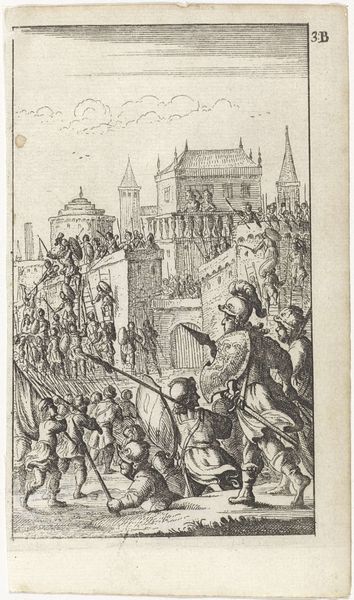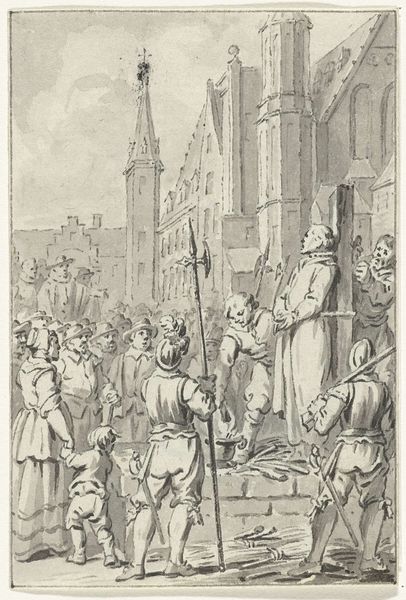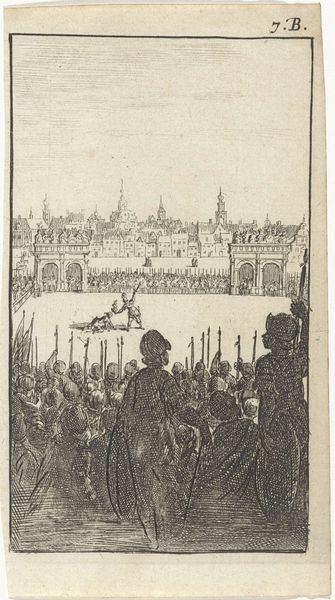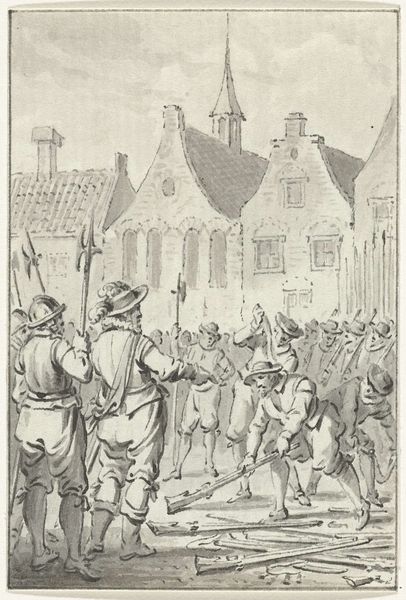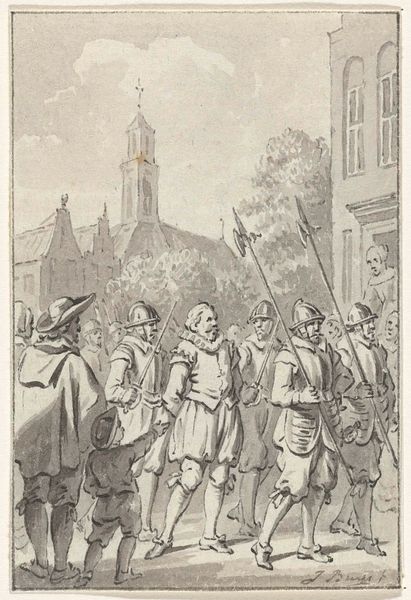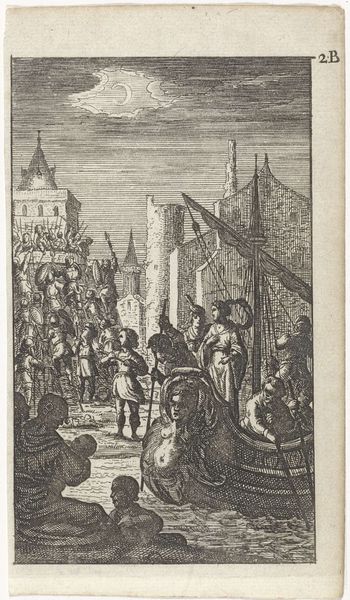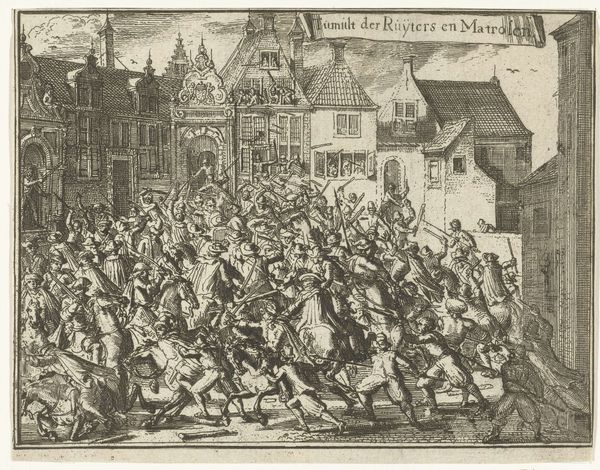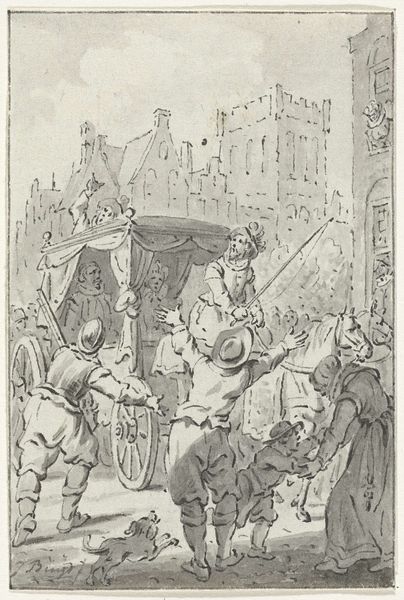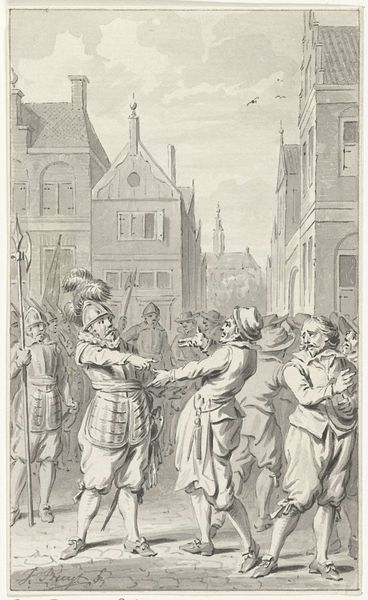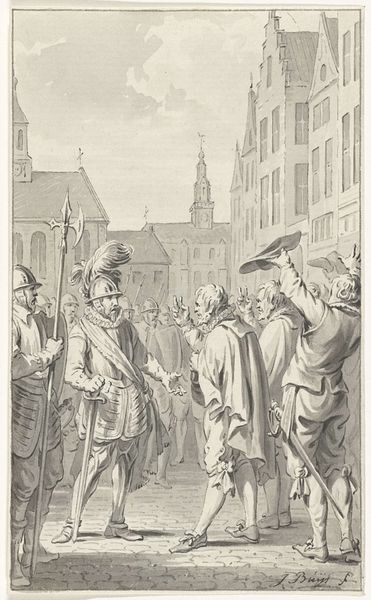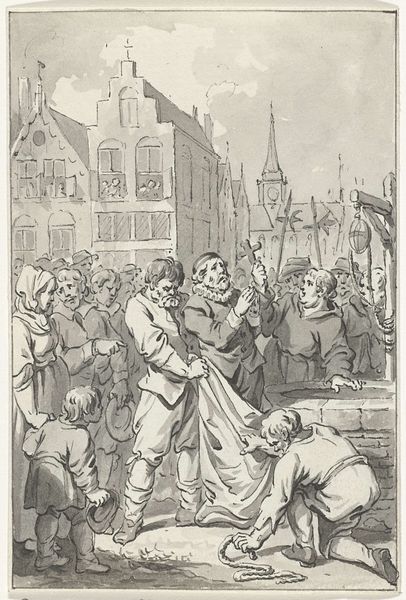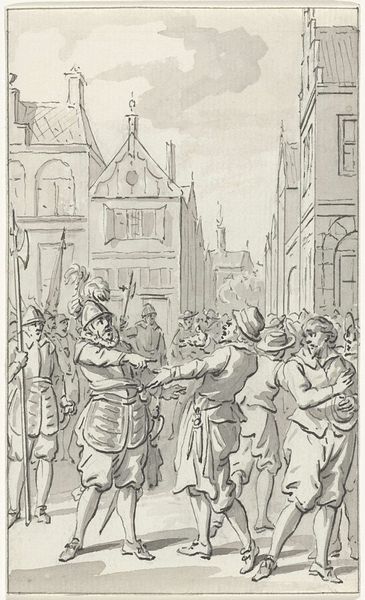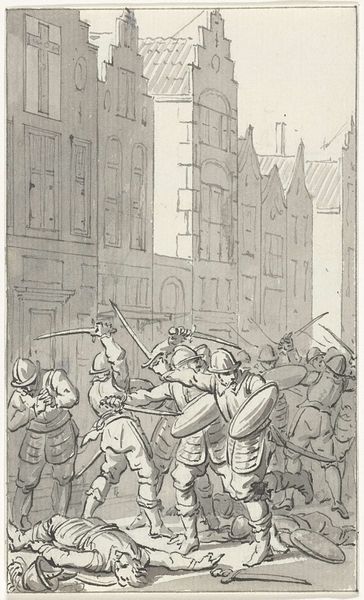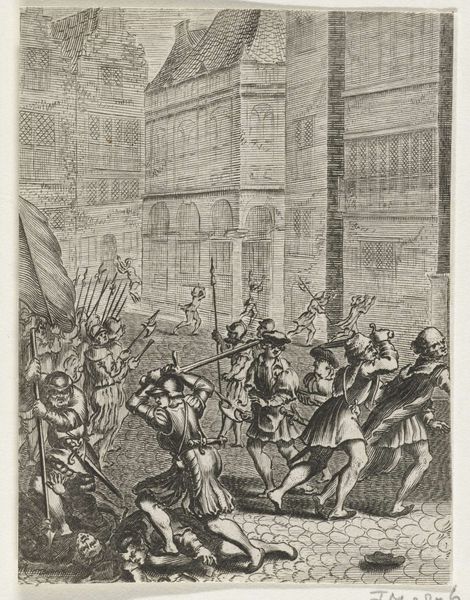
Opstand van het Kaas- en Broodvolk en moord op Claes van Ruyven te Haarlem, 1492 1778 - 1795
0:00
0:00
drawing, ink, pen
#
drawing
#
neoclacissism
#
narrative-art
#
pen illustration
#
ink
#
pen-ink sketch
#
sketchbook drawing
#
pen
#
genre-painting
#
history-painting
#
academic-art
Dimensions: height 82 mm, width 56 mm
Copyright: Rijks Museum: Open Domain
Editor: This pen and ink drawing is Jacobus Buys’ "Opstand van het Kaas- en Broodvolk en moord op Claes van Ruyven te Haarlem, 1492", created sometime between 1778 and 1795. The sketch depicts a chaotic scene with people brandishing weapons and flags, all surrounding what appears to be a murder. What strikes me is how Buys used such delicate materials to portray such a violent uprising. What do you see in this piece? Curator: The medium, the humble pen and ink, immediately suggests the democratization of art production. It speaks to the potential for widespread dissemination of narratives, in contrast to, say, large-scale oil paintings commissioned by the elite. Consider the social context. Buys made this drawing during a time of political and social upheaval. Doesn't the accessibility of pen and ink itself echo the "Kaas- en Broodvolk's" demands – their struggle for access to basic sustenance? Editor: That's fascinating! So you're saying that the very materials used reflect the themes of the uprising itself? But does the artist's choice of materials imply anything about his own views of this riot? Curator: Absolutely. Academic art, like Neoclassicism here, favored the narratives of elites, like in history paintings. The use of inexpensive pen and ink by Buys suggests an acknowledgement – maybe even endorsement – of those whose narratives may not always be considered ‘high art.’ Does that make you see it differently? Editor: Definitely! I had focused on the scene's violence and overlooked the medium's role. The choice of a humble pen to depict such a dramatic event does seem like a conscious decision to include a social commentary. Curator: Exactly. The focus on process and materials lets us consider both the story depicted, and the circumstances of its creation. It's about whose stories are told and how. Editor: I now see the drawing not just as a depiction of a historical event but also as a statement on the means of art production and representation. Curator: Precisely. The medium becomes part of the message.
Comments
No comments
Be the first to comment and join the conversation on the ultimate creative platform.
